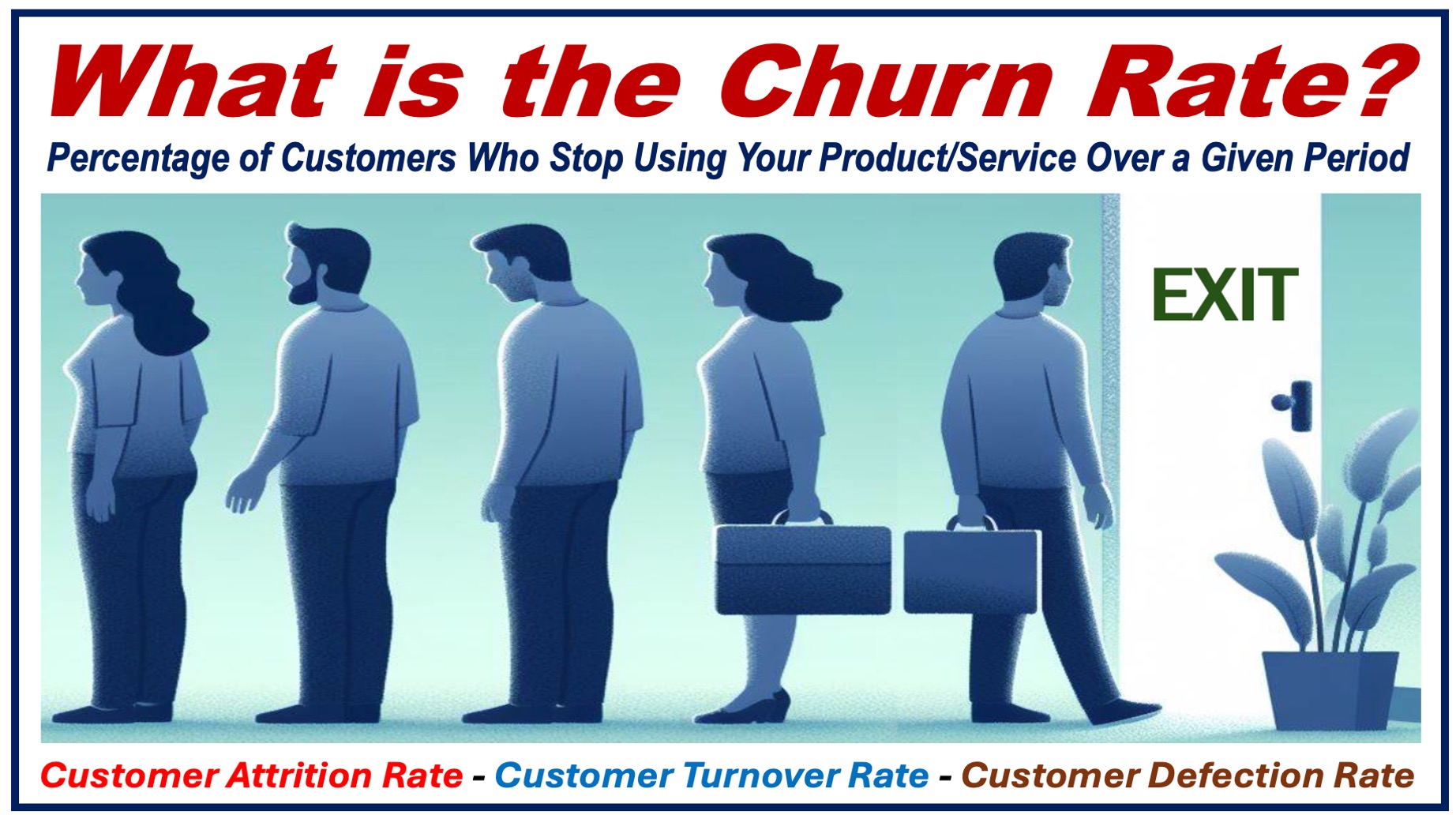Churn rate (sometimes called customer attrition or turnover rate) refers to the rate at which customers stop doing business with a company. They may have canceled a service, not renewed a subscription, or simply ceased to be active customers.
For example, if a company had 300 customers at the start of the month and 30 of them canceled or left by the end, the monthly churn rate would be 10%. In simple terms, churn rate answers the question: “How quickly are we losing customers?”
A higher churn rate means a larger share of customers are leaving, whereas a lower churn rate means most customers are sticking around. Usually, companies aim for a low churn rate because that indicates customers are satisfied and continuing their relationship with the business.
It is a common concept across many industries, from tech companies to banks.
While the term “dropout rate” has a similar meaning, it’s typically used in educational settings to describe students leaving courses or programs. In business settings, “churn rate” is the more common term.
Understanding the Importance of Churn Rate
Lost customers mean lost revenue
When a business has a high churn rate, it is losing customers rapidly, which directly cuts into its sales and income.
If too many people leave, the company’s growth can stall or even decline. Each customer who leaves might be money that the business will no longer earn every month or year.
A high churn rate can therefore hurt a company’s financial health. For example, a lot of cancellations could lead to a noticeable drop in monthly revenue. To counter this, companies must spend resources to replace those lost customers with new ones. However, in business, acquiring a new customer costs more than keeping an existing one. Advertising, sales efforts, or sign-up incentives for new customers can be expensive.
So, if a company is losing customers (high churn), it not only loses the sales from those customers but also has to spend extra money to win new customers to fill the gap.
Put simply, lowering churn can save money and boost profits, while uncontrolled churn can be very costly.
Impacts long-term success and reputation
Customers often talk about their experiences. If many customers are leaving a company because of bad service or poor quality, that negative word-of-mouth can make it harder to attract new customers. On the flip side, focusing on keeping customers happy (reducing churn) can build loyalty and positive recommendations.
Consumers will switch to a competitor after multiple bad experiences with a business.
What this means is that a high churn rate can serve as a warning sign that something is wrong in the customer experience.
Businesses that manage to maintain a low churn rate usually have better customer loyalty, which translates to steady revenue and growth over time.

Types of Churn
Here are three types of churn in the world of business:
Customer Churn
This is the most familiar type – it represents the number or percentage of customers who leave over a given period.
Revenue Churn
This shows the percentage of revenue lost due to customer departures. While similar, it accounts for variations in subscription levels or customer spending habits.
Staff Churn
Also known as employee churn, it refers to the rate at which employees leave a company within a certain period. However, most people use the term “Staff Turnover.”
Calculating Churn Rate
The basic formula for calculating the churn rate is:
(# of customers lost in a month ➗ # of customers at the start of the month) x 100
For example, if you started the month with 100 subscribers and lost 10, your churn rate would be 10%. See the image below.

Reducing Your Churn Rate
The following tips may help keep your churn rate low:
Deliver Excellent Customer Service
Responsive and helpful support makes customers feel valued. Customer service today is no longer a useful extra to offer consumers – it has become a necessity.
Since the advent of the internet, consumers have come to expect top-quality customer service and support.
Continuously Improve Your Product or Service
Carefully monitor your customer feedback and add features or updates to your offerings accordingly. Let your customers see that you offer real value for money.
Maintain Clear Communication
Be transparent and proactive about changes, updates, product enhancements, policy adjustments, or any issues that might arise.
Communicate regularly with all stakeholders through newsletters, social media platforms, direct emails, webinars, and community forums. In some business models, you should consider talking to your customers on the phone or even face-to-face.
Treat your churn rate as more than just a number. It is a measure of the overall health of your customer relationships.
Track your churn, find out the reasons behind it, and do what you can to minimize it. It will be worth all the effort, as reducing churn helps maintain and enhance your company’s viability, ensuring it continues to thrive over the long term.
